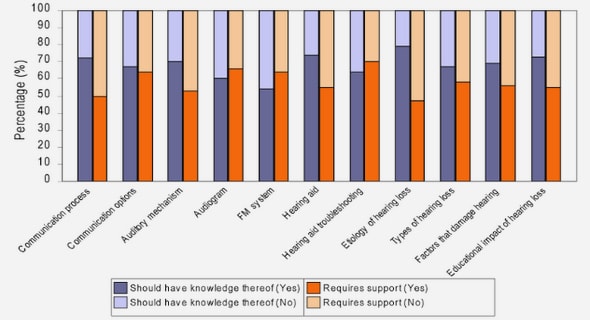(Downloads - 0)
For more info about our services contact : help@bestpfe.com
Table of contents
INTRODUCTION
1.1 General context
1.1.1 Global Carbon Cycle
1.1.2 Greenhouse gases and climate change
1.1.3 Global carbon cycle’s carbon sinks
1.1.4 Humans and climate change
1.1.5 The carbon cycle feedback loop
1.1.6 Current issues
1.2 Role of forests in the carbon cycle
1.2.1 Tropical forests and the carbon stock
1.2.2 Link between carbon and forest biomass
1.2.3 The importance of quantifying forest biomass
1.3 Biomass estimation
1.3.1 Biomass estimation with optical and radar data
1.3.2 Biomass estimation using allometric relations
1.3.3 Plot aggregate allometry for biomass estimation
1.4 Forest canopy height in relation to forest biomass
1.4.1 Canopy height estimation using radar and optical data
1.4.2 Canopy height estimation using LiDAR data
1.4.3 Spatial extrapolation of LiDAR canopy height estimates
1.5 Forest types in relation to forest biomass
1.6 Organization of the dissertation
1.6.1 Objectives
1.6.2 Dissertation plan
CHAPTER 2: STUDY AREA AND DATASETS
2.1 Study area
2.2 Datasets description
2.2.1 Spaceborne LiDAR datasets
2.2.2 Airborne LiDAR datasets
2.2.2.1 Small footprint low density LiDAR dataset
2.2.2.2 Small footprint high density LiDAR dataset
2.2.3 Ancillary datasets
2.2.3.1 MODerate-resolution Imaging Spectroradiometer (MODIS) data
2.2.3.2 SRTM digital elevation model data
2.2.3.3 Geological map
2.2.3.4 Forest landscape types map
2.2.3.5 Average rainfall map
CHAPTER 3: CANOPY HEIGHT ESTIMATION IN FRENCH GUIANA WITH LIDAR ICESAT/GLAS DATA USING PRINCIPAL COMPONENT ANALYSIS AND RANDOM FOREST REGRESSIONS
3.1 Introduction
3.2 Materials and methods
3.2.1 Lidar data processing and canopy height estimation
3.2.1.1 Processing the LD dataset
3.2.1.2 Processing the HD dataset
3.2.1.3 Comparison of canopy height estimates from the HD dataset using different estimation methods
3.2.1.4 Comparison of canopy height estimates from the LD and HD datasets
3.2.1.5 Glas data processing
3.2.2 Background on GLAS canopy height estimation
3.2.2.1 Direct method
3.2.2.2 Multiple regression models using GLAS and DEM metrics
3.2.2.3 Proposed techniques for canopy height estimation
3.2.2.4 Random forest regressions using principal components
3.3 Results
3.3.1 Direct method
3.3.2 Multiple regression models
3.3.2.1 Using GLAS and DEM metrics
3.3.2.2 Using principal components
3.3.3 Random forest regressions
3.3.3.1 Using GLAS and DEM metrics
3.3.3.2 Using principal components
3.3.4 Model performance in different forest conditions
3.3.5 Error on the estimation of biomass
3.4 Discussion
3.5 Conclusions
CHAPTER 4: FOREST CANOPY HEIGHT MAPPING OVER FRENCH GUIANA USING SPACE AND AIRBORNE LIDAR DATA
4.1 Introduction
4.2 Materials and methods
4.2.1 Canopy height mapping using regression-kriging
4.2.2 Canopy height trend mapping using Random Forest regressions
4.2.3 Ordinary krigging of regression residuals
4.2.4 Effects of LiDAR sampling density on precision of the mapped canopy heights.
4.3 Results
4.3.1 Canopy height mapping using Random Forest regressions
4.3.2 Canopy height estimation using regression-kriging
4.3.3 Relationship between LiDAR flight lines spacing and the accuracy on the kriged canopy height
4.4 Discussion
4.5 Conclusions
CHAPTER 5: COUPLING POTENTIAL OF ICESAT/GLAS AND SRTM FOR THE DISCRIMINATION OF FOREST LANDSCAPE TYPES IN FRENCH GUIANA
5.1 Introduction
5.2 Materials and methods
5.2.1 Methodology
5.2.2 GLAS waveform processing
5.2.3 Canopy height and roughness index estimations
5.3 Results and discussion
5.3.1 Global analysis of the differences between the GLAS and SRTM elevations
5.3.2 Analysis of the differences between the GLAS and SRTM according to Hc and R
5.3.2.1 Differences between the GLAS and SRTM according to Hc
5.3.2.2 Differences between the GLAS and SRTM according to R
5.3.3 Random Forest classification results
5.3.4 Effect of the GLAS acquisition season
5.4 Conclusions
GENERAL CONCLUSIONS AND PERSPECTIVES
6.1 Conclusions
6.2 Perspectives
6.2.1 Canopy height estimation using GLAS
6.2.2 LiDAR canopy height mapping
6.2.2.1 Non-spatial canopy height mapping
6.2.2.2 Spatial canopy height mapping
6.2.2.3 Canopy height map resolution
6.2.2.4 Canopy height mapping sampling scheme
6.2.3 Above-ground biomass estimation
RESUME
7.1 Introduction
7.2 Description des jeux de données
7.2.1 Site d’étude
7.2.2 Base de données LiDAR satellitaire
7.2.3 Données du radiomètre spectral à moyenne résolution MODIS
7.2.4 Données issues du Modèle Numérique de Terrain MNT SRTM
7.2.5 Carte géologique
7.2.6 Carte des types de paysage forestier
7.2.7 Carte de précipitation
7.3 Estimation de la hauteur des arbres à partir des données GLAS
7.3.1 Contexte de l’estimation de la hauteur des arbres en utilisant GLAS
7.3.2 Techniques proposées pour l’estimation de la hauteur des arbres
7.4 La spatialisation de la hauteur des arbres LiDAR
7.4.1 Contexte sur la technique régression-krigeage
7.4.2 La cartographie de la hauteur des arbres en utilisant la régression krigeage
7.4.3 Relation entre l’espacement des lignes de vol LiDAR et la précision de la hauteur des arbres krigée
7.5 Le potentiel du couplage GLAS et SRTM pour la discrimination des types de paysage forestier
7.5.1 Classifications des empreintes GLAS
7.5.2 Les effets de la saison sur les acquisitions GLAS
7.6 Conclusions et perspectives
7.6.1 Conclusions
7.6.2 Perspectives
7.6.2.1 La spatialisation de la hauteur des arbres à partir du LiDAR
7.6.2.2 L’estimation de la biomasse
REFERENCE




